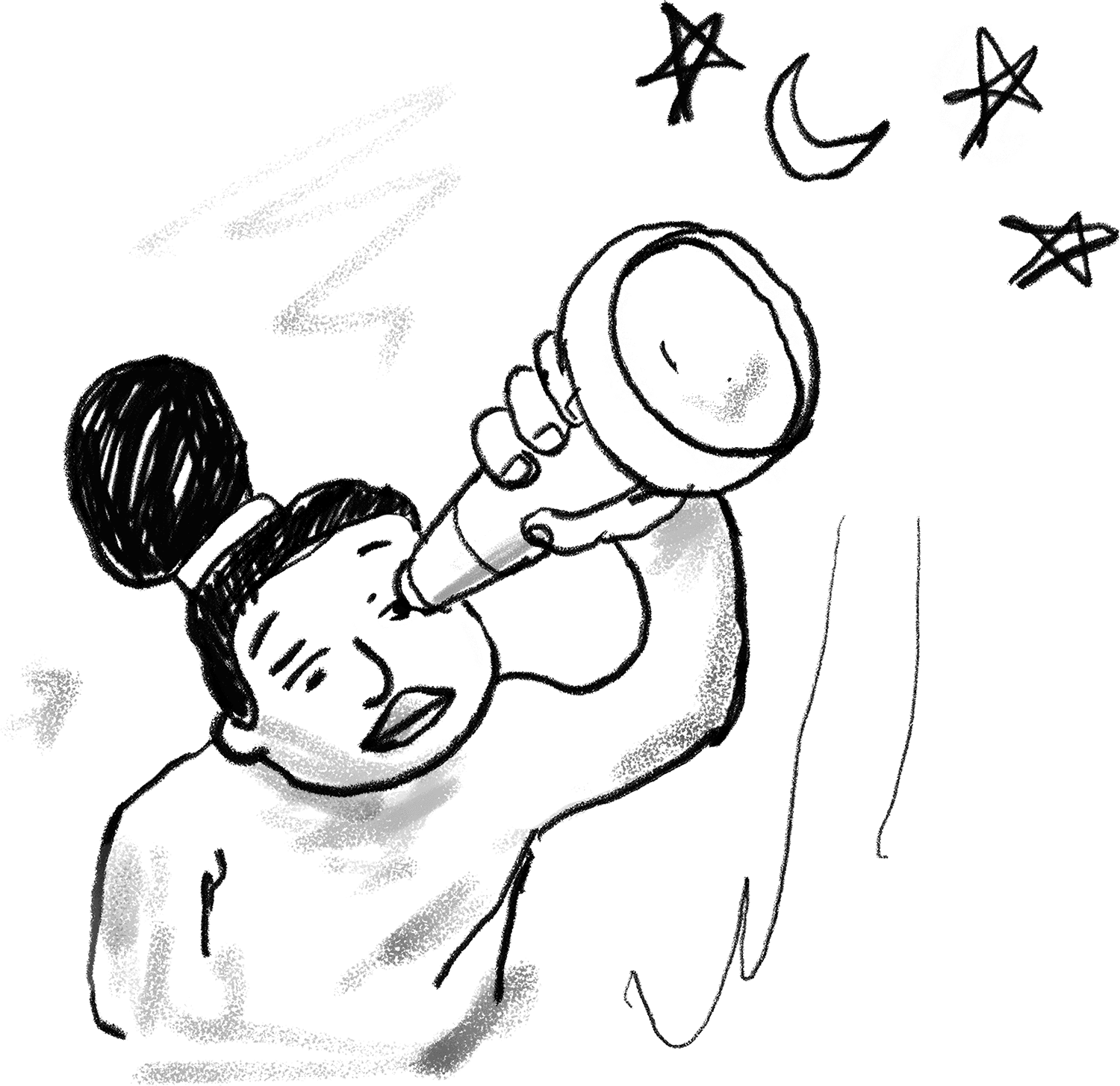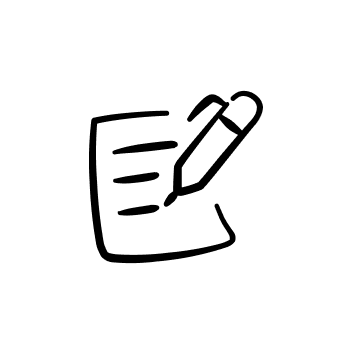GIRP notes are increasingly gaining in popularity. They are an organized way to capture essential facets of each therapy session, structured around -
- Goals
- Interventions
- Responses
- Plan
This approach offers a roadmap not just for documenting a session, but for steering the therapeutic process itself. GIRP notes go well with a more goal-oriented therapy process, and with the rise of cognitive behavioral techniques, they are becoming more widely adopted.
"Effective documentation not only protects you as a clinician but also promotes meaningful progress for your clients by clearly mapping key points in their therapeutic journey."
- Anonymous Psychotherapist
Breaking Down GIRP Notes: Goals, Interventions, Response, Plan
What is a GIRP Note?
A GIRP note is a type of progress note to document client sessions in a structured way. The acronym stands for Goals, Interventions, Response, and Plan, each representing a critical component of the therapeutic process.
GIRP notes allow mental health professionals to effectively track client progress, identify areas that need improvement, and make clear decisions about future treatment.
Goals
Under the Goals section, you would specify exactly what the client's goals are, such as, “Reduce anxiety during social interactions.”
This sets a clear end point both you and your client can work towards. Compare this with a more traditional “Subjective” note seen in SOAP documentation, which might simply describe the client’s current feelings or complaints without a concrete aim.
Interventions
Next, the Interventions segment pinpoints the exact techniques you employed to help the client reach their goals.
A precise description in the intervention section helps in replicating successful techniques in future sessions, as opposed to a more general “Objective” list in SOAP notes that may catalog observations without detailing the actions taken.
Response
Then comes the Response section, where you chronicle the client's response to the interventions. It answers the crucial question: Was the approach effective? For example, “Client reported feeling less anxious and showed improved communication skills in role-playing exercises.”
This is more dynamic compared to the “Assessment” in SOAP notes, which could be a clinician’s interpretation rather than a direct client feedback.
Plan
Finally, the Plan segment outlines the next steps, ensuring continuity and tracking the client's progress.
Here’s where you might write, “Continue CBT and introduce group therapy sessions.” This actionable, future-oriented planning is similar to but often more detailed than the “Plan” section in a SOAP note.
The GIRP model’s structured yet detailed approach not only improves documentation but also facilitates better therapeutic outcomes by providing a clear strategy that both clinician and client can follow.
When to use GIRP Notes
Use GIRP when your client has well-defined goals and objectives.
This structure shines when it comes to tracking incremental progress towards larger objectives. It simplifies the process for both the mental health professional and the psychotherapist, making it straightforward to monitor client progress and celebrate the achievement of specific milestones.
Additionally, GIRP notes are specifically designed to highlight treatment progress on goals set in the client's treatment plan rather than merely documenting client behaviors.
GIRP is equally valuable for clinicians drafting treatment plans. Its clarity and ease of use make it a reliable tool for referencing client-stated goals and objectives during treatment planning.
Sample real-life GIRP Note for an anxiety patient
Goal:
Reduce anxiety symptoms and improve daily functioning by using mindfulness practices helping the client identify important personal values, strengths, and objectives.
Intervention:
Conducted 50-minute cognitive-behavioral therapy session. Reviewed anxiety symptoms and triggers from the past week. Taught diaphragmatic breathing technique. Introduced thought challenging exercise for catastrophic thinking
Response:
Client reported experiencing 3 panic attacks in the past week, down from 5 the previous week. Successfully practiced diaphragmatic breathing in session. Identified two recurring catastrophic thoughts: "I'll lose control" and "I'm having a heart attack". Showed openness to challenging these thoughts but expressed some skepticism about effectiveness
Plan:
- Continue weekly CBT sessions
- Assign daily practice of diaphragmatic breathing for 10 minutes
- Homework: Complete thought challenging worksheet for identified catastrophic thoughts
- Consider introducing gradual exposure exercises in next session if client feels ready
Next appointment scheduled for [Date] at [Time].
CPT code: 90834
Writing Effective GIRP notes
When developing your GIRP note-taking skills, it’s essential to continually refine your approach through practice and reflection.
First, familiarize yourself with the principles of clarity.
This involves being specific about the client’s goals, the interventions used, the client’s responses, and the plans for ongoing treatment.
Seek feedback from peers and supervisors.
They can offer insights into areas where you may need improvement or highlight strong points in your documentation.
Review sample notes
Look at samples from reputable sources. This will provide you with a benchmark for quality and content.
Use an AI scribe to automate your GIRP note
Tools like supanote.ai can directly write your GIRP note after listening to your session in a highly secure, HIPAA-compliant way. You can then edit the note as required. This will save you note time, ensuring that no critical elements are overlooked.
Your Personal AI Scribe for Effortless GIRP Notes
:Let Supanote handle your GIRP documentation while you focus on what matters the most - your clients
Generate Your First Note Free!
Best Practices While Writing GIRP Notes
- Be Specific: Clear and specific notes help not only you but also any other therapists who may treat the client in the future.
- Use Direct Quotes: Capturing the client's exact words can provide valuable insights into their thoughts and feelings.
- Frequent Reviews: Regularly review your notes to ensure they remain relevant and up-to-date with the client's evolving situation.
- Stay Organized: Utilize templates or digital tools to keep your notes well-organized and easily accessible.
Remember, the goal of GIRP notes is not only to document what occurred during the session but also to track the client's progress over time, and expected progress over future course of the sessions. Effective note-taking can greatly enhance the therapeutic process, facilitating better outcomes for your clients.
Common Pitfalls to Avoid When Writing GIRP Notes
Writing GIRP notes can feel like navigating a labyrinth—it's easy to get lost in the details or miss critical information. However, understanding common pitfalls can help you steer clear of these obstacles and produce effective, comprehensive notes.
1. Overloading with Details
While it's tempting to include every single detail, excessive information can obscure the essential points. Focus on quality and clarity to ensure that your notes are both meaningful and actionable. For example, instead of detailing every minor reaction during a session, highlight significant responses that align with the session's goals.
2. Vague Goal Setting
Setting nebulous or overly broad goals can lead to confusion and ineffective interventions. Goals should be SMART: Specific, Measurable, Achievable, Relevant, and Time-bound. For instance, "increase social activities" is vague. A more specific goal would be, "Engage in one social event per week over the next month."
3. Ignoring Client Input
The best therapeutic plans are collaborative. Neglecting to incorporate the client’s perspective can lead to disengagement. Make sure to regularly check in with clients and adjust goals and interventions according to their feedback and experiences.
4. Disorganized Format
A haphazard structure across different sessions can make the client progress difficult to follow. If you choose GIRP, stick to the GIRP format consistently: Goal, Intervention, Response, Plan. This not only ensures clarity but also facilitates better communication among healthcare providers.
5. Neglecting Follow-Up
Failing to include a clear plan for follow-up can render your efforts ineffective. Always document the next steps and ensure they are actionable and realistic. For example, specify future interventions and the criteria for assessing progress.
Avoiding these pitfalls will lead to more concise and impactful GIRP notes, ultimately enhancing therapeutic outcomes.
GIRP notes vs SOAP notes
While both GIRP and SOAP notes are methods of clinical documentation, they serve slightly different purposes.
The GIRP note format is a type of behavioral health progress note particularly focused on recording a client's treatment goals and progress.
SOAP notes focus on Subjective, Objective, Assessment, and Plan components, making them more medical-oriented.
GIRP notes, on the other hand, are more attuned to the therapeutic process, emphasizing the goals and responses of the client.
Automating GIRP Notes Using AI
In recent years, technological advancements have opened up new possibilities for streamlining clinical documentation. One exciting development in this area is the automation of therapy notes using artificial intelligence, which offers significant time-saving potential for therapists.
Automating GIRP notes with Supanote
Supanote is an AI platform that can automatically write GIRP notes and other progress notes. Here are some key features and benefits:
- Direct Session Capture: Supanote can listen directly to therapy sessions and automatically generate PIE notes based on the conversation.
- Built-in GIRP Note Template: The system comes with a pre-configured GIRP note template, ensuring that all generated notes follow the correct format and structure
- Customizable Templates: Supanote can learn how to write exactly like you, and pick up on your individual style
- HIPAA Compliance: Supanote is designed to be HIPAA-compliant, providing a high level of security for sensitive patient information. This compliance is crucial for maintaining patient confidentiality and meeting regulatory requirements.
- Time-Saving: By automating the note-taking process, Supanote can potentially save therapists hours of documentation time each week. This allows clinicians to focus more on patient care and less on administrative tasks.
Supanote works seamlessly with existing Practice Management Software/ EHRs, and you can directly get your generated GIRP notes onto your EHR, saving 90% of the time in the documentation process.
Automate Your GIRP Notes with Supanote
Save hours with AI-generated progress notes tailored to the GIRP format
Try for Free Now!
By leveraging these technology solutions, mental health professionals can enhance their note-taking process, ensuring that all critical elements are captured and organized effectively.
Here's also a quick Comparison of Top 5 AI Therapy Note Tools
FAQs About GIRP Notes: Common Questions Answered
Q: How often should GIRP notes be written?
A: GIRP notes should be written after each session with a client. This ensures that all relevant information is up-to-date and can be referenced in future sessions, maintaining a coherent therapeutic narrative.
Q: Can I use a template for GIRP notes?
A: Yes, you can use a template for your GIRP notes. A template can streamline the process, making it quicker and more efficient to document each session. Tools like Supanote.ai have these templates built in.
Q: How do GIRP notes differ from SOAP notes?
A: While both GIRP and SOAP notes are methods of clinical documentation, they serve slightly different purposes. SOAP notes focus on Subjective, Objective, Assessment, and Plan components, making them more medical-oriented. GIRP notes, on the other hand, are more attuned to the therapeutic process, emphasizing the goals and responses of the client. For example, you'd see GIRP notes being used often in Occupational Therapy practices
Q: How do GIRP notes differ from DAP notes?
A: DAP (Data, Assessment, Plan) notes provide a broader overview by documenting observed data, the therapist's assessment of the situation, and the plan moving forward. DAP notes are often preferred for more open-ended or exploratory therapy sessions where immediate goals may be less defined. In contrast, you would use GIRP when tracking progress towards specific objectives, and are great for recording patient interactions that are more goal oriented.
Q: Are there digital tools available to help with GIRP notes?
A: Yes, several new AI scribe tools can directly listen in on your sessions in a secure way and write your GIRP notes for you. You can also directly dictate into the product to generate your progress note. They can do everything from intake notes, case conceptualization to regular GIRP/ SOAP notes. These platforms are designed to streamline note-taking, allowing you to focus more on your patients and less on paperwork. Supanote.ai is one such AI scribe for therapists that has a security-first approach and with easy pricing.
Conclusion
GIRP notes are an invaluable tool for mental health professionals, providing a structured format for documenting client sessions, tracking progress, and making informed decisions about future treatment. By incorporating technology and using a clear, systematic approach, mental health professionals can streamline the note-taking process, improve communication, and enhance client care.
Whether you are a seasoned therapist or just starting out, adopting GIRP notes and leveraging technology can help you provide better care for your clients and improve your overall practice management.
